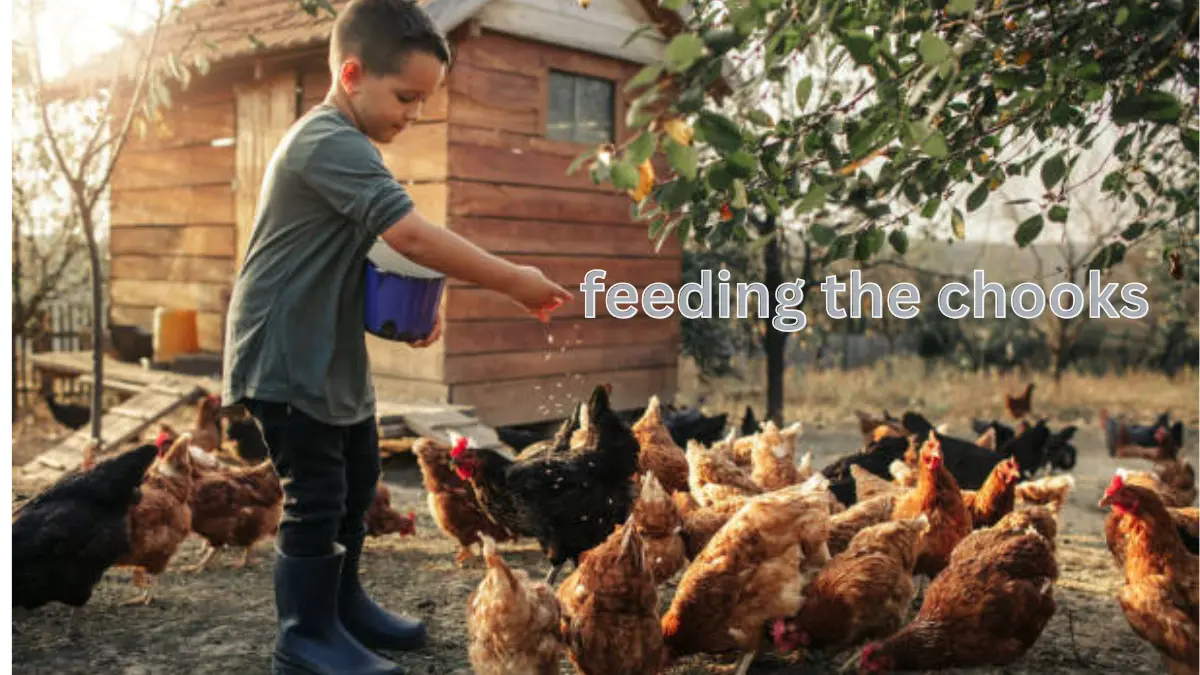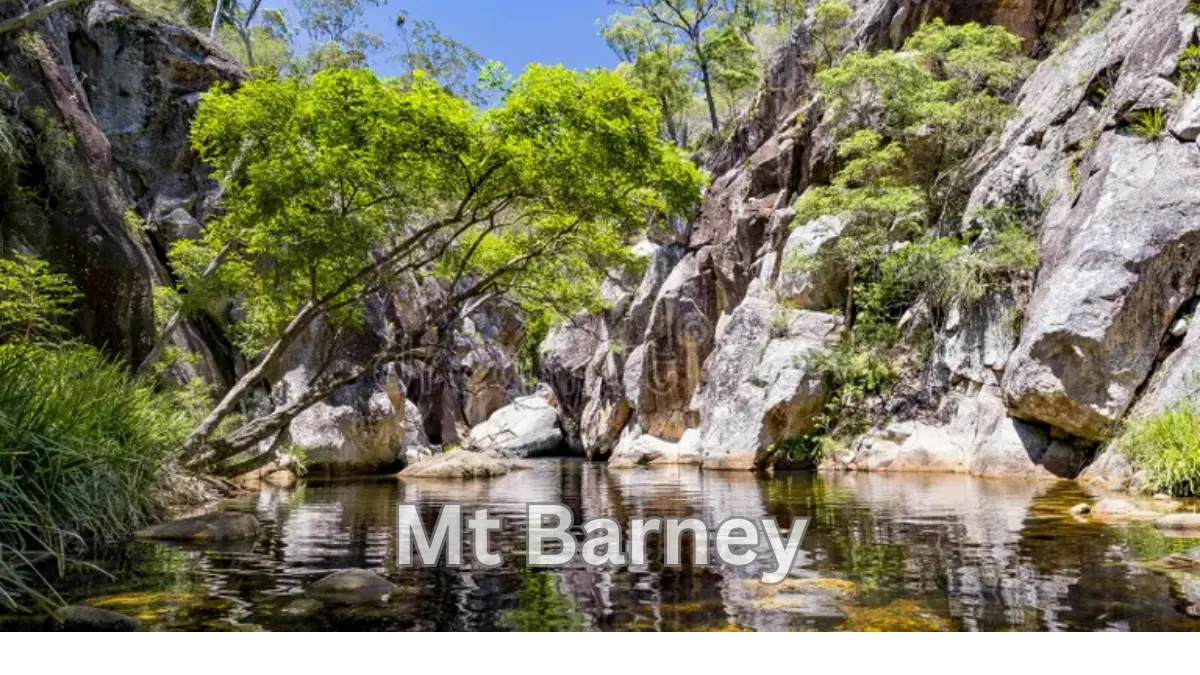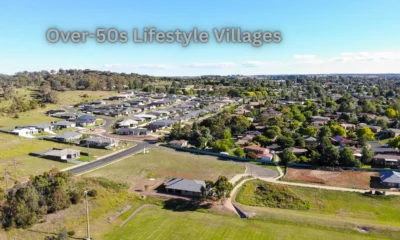Home & Garden
A fair dinkum guide to feeding the chooks

Aussies love to have a few chickens in their backyards, just like they love to eat sausages and play cricket. You need to feed your feathered friends the right way to get those beautiful eggs with golden yolks and keep them happy. It’s not enough to just throw some scraps over the fence to feed the chickens. You need to give them a balanced diet that keeps them healthy, helps them lay eggs, and makes them feel good overall. This guide will explain everything you need to know, from how to pick the right feed to how to avoid major mistakes.
What makes up a healthy chook diet?
Chickens need a balanced mix of nutrients to stay healthy, just like we do. A laying hen needs a careful mix of protein, carbs, fats, vitamins, and minerals to stay healthy. The key to keeping your flock healthy and getting eggs every morning is to get this balance right.
The main things of their diet plan are:
- Protein: Protein is essential for growth, feather development, and, most importantly, making eggs. The diet of laying hens should have 16 to 18 percent protein.
- Carbohydrates and Fats: These provide your chickens with the energy they need to do things like scratch around the yard, take dust baths, and look for food.
- Calcium: This is something that laying hens need. It’s the main thing that makes up eggshells. If you don’t provide your hens enough calcium, they will lay eggs with soft shells or no shells at all. This can even be bad for their health.
- Vitamins and Minerals: A wide range of vitamins and minerals are needed for many things, such as the immune system, bone health, and the colour of the yolk.
Choosing the best commercial feed
A commercial feed is the easiest way to ensure your chickens get all the vitamins and minerals they need. Scientists have made these feeds so that they give a balanced diet. When you go to your neighbourhood hardware or stock feed store, you’ll find a few different choices. If you want more information about feeding the chooks guide then visit Canberra Magazine.
Different kinds of chook feed
- Mash: Mash is a feed that has been ground very finely and not processed. It can be a little messy, and sometimes the chooks will only eat their favourite parts, which can make their diet unbalanced. To cut down on waste, it is often mixed with a little water to make a damp crumble.
- Pellets: Pellets are small, bite-sized pieces of mash that have been pressed together. This is a great choice because each pellet has all the nutrients it needs. It stops selective feeding and makes less of a mess.
- Crumbles: Crumbles are basically pellets that have been broken up into smaller pieces. It’s a good middle ground choice that people often use for younger chickens (pullets) or birds that have trouble with bigger pellets.
Food for different stages of life
The nutritional needs of chickens change as they get older.
- Chick Starter (0-8 weeks): This is a high-protein feed (about 20–24%) that helps young chicks grow quickly. There are medicated versions that can help keep young birds from getting coccidiosis, a common and serious intestinal disease.
- Grower/Pullet Developer (8-18 weeks): As your chicks grow up into awkward teenagers, they need less protein. A grower feed has 14–16% protein and less calcium than a layer feed because the chickens aren’t laying eggs yet.
- Layer Feed (18+ weeks): It’s time to switch to layer feed when your hens start laying eggs. This has about 16–18% protein and, most importantly, a lot of calcium to help make strong eggshells.
What to do with kitchen scraps and garden treats
One of the best things about having chickens in your backyard is that they can turn your leftovers into eggs. But scraps should be thought of as treats, not the main course. The 90/10 rule is a good rule of thumb: 90% of their food should be a complete layer feed, and only 10% should be scraps and other treats.
Safe treats for your chooks
Most fruits and vegetables are great, healthy snacks. Your flock will love:
- Silverbeet, spinach, and lettuce are all leafy greens.
- Grains that have been cooked, like rice and pasta (in moderation)
- Porridge without sugar
- Peels from carrots, pumpkins, and zucchinis
- Remove the seeds from berries, melon, and apples.
Foods to avoid feeding your chickens
Chickens are tough, but some foods are bad for them or poisonous. Do not ever give your chickens:
- Avocado: The skin and pit are very poisonous.
- Onion and garlic: Eating a lot of them can make you anaemic.
- Raw or dried beans: They have a poison in them that kills birds.
- Chocolate or sugary sweets: Chocolate or other sugary treats are bad for you and can upset your stomach.
- Mouldy or rotten food: Don’t feed your chickens mouldy or rotten food. They won’t eat it either.
- Raw potato peels: Peels of raw potatoes can be poisonous, especially if they are green.
Foraging and roaming free in the backyard of an Aussie
Letting your chickens run around in the backyard is great for their mental and physical health. It lets them do things that come naturally to them, like scratching for bugs, eating fresh greens, and bathing in dust.
While foraging, they will add to their diet with:
- Worms, slugs, and bugs
- Weeds and new grass
- Seeds that have dropped from plants
Keep in mind that foraging is not a proper diet; it is just a way to get extra food. Even the most dedicated free-range chickens need to have access to a good layer feed to make sure they provide all the nutrients they need, especially calcium. Also, pay attention to what you have in your garden. Ensure the area around your garden plants is safe, because some of them can be poisonous.
The importance of grit and shell grit
There are two types of “grit” that are often talked about when it comes to chicken health. Both are very important.
Insoluble Grit: Chickens don’t have teeth, so they can’t eat grit. Instead, they keep small, hard stones and sand in their gizzard, which is a muscular grinder that breaks down their food. If your chickens are free-ranging, they will probably find enough grit on their own. If they are kept in a run, you will need to give them a small bowl of store-bought grit or coarse sand.
Soluble Grit (Shell Grit): It is usually made from crushed oyster shells or limestone. It is a pure calcium supplement that dissolves in the hen’s body and is used right away to make eggshells. Put this in a separate container from their main feed so that each hen can get what she needs.
Don’t forget that chickens drink clean, fresh water.
Water is the most essential part of a chicken’s health. A chicken’s body is more than 60% water, and an egg is about 75% water. A hen can get dehydrated very quickly, especially in the hot Australian summer. If she doesn’t have water for even a few hours, she won’t lay eggs for days.
Always ensure your chickens can get to clean, fresh water. Every day, clean the water container to keep algae and bacteria from growing. You should check the water several times a day to make sure it hasn’t run out or been tipped over. On hot days, add some ice blocks to the water to keep it cool.
Things you should not do when feeding
Getting your feeding schedule right will save you a lot of trouble later on. Some common mistakes that new chicken owners make are:
- Relying too heavily on scraps: The biggest mistake is relying too much on scraps. Kitchen scraps aren’t good for you and can cause health problems, deficiencies, and a drop in egg production.
- Forgetting shell grit: Calcium is in layer feed, but it’s not always enough. It is essential to give separate shell grit to make eggshells strong.
- Letting feed get wet or stale: Mould can grow on wet feed, which can make your chickens sick. Put out only enough food for one day, and ensure the feeders are safe from the rain.
- Not providing enough feeder space: If there isn’t enough room, the more timid chickens will get pushed out and won’t get enough food. Ensure that all of your birds can eat at the same time without any trouble.
If you give your backyard flock a balanced diet, fresh water, and the right supplements, they will live a long, healthy, and productive life. Your hard work will pay off in the form of fresh, tasty eggs and the pleasure of watching your happy chickens roam around the garden.
Home & Garden
Mt Barney: A beautiful place on Queensland’s Scenic Rim Getting to know Mt Barney

Mt Barney is one of the most beautiful mountainin Australia. It is located in Queensland’s Scenic Rim. It is the second-highest peak in South-East Queensland, rising 1,359 metres. It is also part of the Gondwana Rainforests, which are on the World Heritage List. For many Australians, It offers adventure, raw beauty, and a journey through a pristine environment.
Cultural and natural significance
Mount Barney holds great cultural significance for Indigenous Australians, particularly the Yugambeh and Ugarapul people, who have long considered it a sacred site. Its rugged cliffs, diverse habitats, and ancient plant life immerse visitors in history as well as the environment. Mount Barney National Park and its surrounds are home to unique wildlife species, making them ecological treasures.
Hiking and adventure opportunities
Mt Barney is known for its tough bushwalks and summit climbs. Unlike other well-known Australian mountains with marked trails, many of Mt Barney’s routes require navigation skills and a good level of fitness. Popular routes include:
- South Ridge (Peasants Ridge): The most commonly used track to the East Peak.
- South East Ridge: A tougher, steeper climb for more experienced hikers.
- Logan’s Ridge: This route is not for beginners; you must know how to scramble and climb technically.
- In Nepal, the climb to Everest Base Camp is well-known and difficult. It takes you to the base of the world’s tallest peak.
- The Inca Trail to Machu Picchu in Peru: This historic road leads past ancient ruins and breathtaking views of the Andes.
- Tour du Mont Blanc (France, Italy, Switzerland): A popular multi-day hike around the Mont Blanc mountain.
- Annapurna Circuit (Nepal): This breathtaking hike takes you through Nepal’s beautiful Himalayas and rich cultural variety.
This well-known climbing route leads to the summit of Mount Kilimanjaro, Africa’s largest mountain.
Anyone who does not want to trek to the top can take easier paths through the forests, rivers, and breathtaking vistas.
Why Mt Barney appeals to Australians
Mt Barney is popular with Australians because of its stunning natural beauty, including world-heritage rainforests and breathtaking views. It also has exciting adventure challenges for experienced hikers and climbers, a rich Aboriginal cultural history, and a therapeutic environment that allows people to connect deeply with nature and improve their health. There are many things to do, from tough climbs to relaxing walks by rock pools, and there are many places to stay, so it’s a popular place to go.
- World-Heritage Rainforests: This park is part of Australia’s World Heritage–listed Gondwana Rainforests, which adds to its beauty. The untouched forests and ecological systems are highly beneficial for biodiversity.
- Diverse Landscapes: The park is filled with beautiful rock pools, rugged peaks, and lush rainforests that are a sight to behold. Just seeing them brings a sense of peace to the heart, making the place even more magnificent and truly captivating.
- Abundant Wildlife: The forests and waterways in the area are home to many rare and endangered flora and animals.
Best timing to visit Mt Barney
The optimum time to hike on Mt. Barney is during the cooler, drier months, usually from June to August (winter), when the weather is more pleasant and the risk of heat stroke is minimal. This makes the hard climbs easier and safer. Swimming in Lower Portals is fantastic in the summer, but this time of year it can be hard to hike because of the heat and sun.
Things to think about during each season:
- Winter (June to August): Perfect for hiking to the top because the weather is cooler and less humid. But if you’re camping, be ready for ffreezing nights.
- Spring (September to November): The weather is nice for hiking, but it can get hotter near the end of the season.
- Summer (December to February): is the best time for things like swimming at Lower Portals, although the trek itself can be very hot and hard. Hikers should leave early to avoid the worst of the sun and heat in the middle of the day.
- autumn (March to May): The weather starts to cool down from summer, making it a nice time to hike.
Camping and accommodation tips while visiting mt barney
You can camp at sites like Bigriggen Park and Flanagan Reserve, which are both bush settings and have parking for cars. Mt Barney Lodge Country Retreat has both camping areas and cabins/homesteads, making it a great place for families or anyone who wants to stay inside. Always check for park alerts, weather, and fire restrictions before you go, especially if you want to camp in a remote area of the national park. Also, make sure you have enough water, know how to navigate, and a Personal Locator Beacon (PLB) for long hikes.
Camping options for visitors:
- Bigriggen Park and Flanagan Reserve are great places to pitch up camp in the bush, where you can drive your car.
- The Mt Barney Lodge Country Retreat has a dedicated campground with toilets, showers, and barbecues, and it’s a popular choice.
- Lake Maroon Holiday Park and the campground at the Mt Barney Lodge Country Retreat are two other places to stay. The latter is the closest to Mt Barney.
- Mt Barney Lodge Country Retreat: This is a flexible choice because it has both a camping area and cozy cottages and cabins for people who want to stay inside.
Getting ready and staying safe
Because of its high terrain and lack of obvious signs, Mt. Barney is best for experienced bushwalkers.
Here are some safety tips:
- You should always have a comprehensive map and compass with you (GPS isn’t always reliable).
- Let someone know what you’re going to do and when you’ll be back.
- Be prepared for sudden changes in the weather, because they might happen quickly.
- Bring enough water because creeks only flow at certain times of the year.
- If you’re new to the area, you might want to hire a local tour.
Important things to know before going to Mt Barney:
- Drink enough water: Carry plenty with you, especially in summer.
- Get up early: Start your hike early in the morning to avoid the heat and give yourself plenty of time to get up and down.
- Get ready for the challenge: Mt. Barney has tough walks with steep hills and scrambling, so make sure you’re in good shape.
- Look at the weather: It can change quickly, especially when clouds come in.
- Know your route: It’s easy to get lost, so either learn the track or go with someone who knows it well.
- Pack the things you need: Bring a first aid kit and know that cell phone reception isn’t always good.
Conclusion
Mt Barney is more than a mountain – it’s an authentic Australian adventure. Hikers, campers, and nature enthusiasts seeking a true wilderness experience are drawn to its harsh terrain, cultural depth, and breathtaking views. For Australians wishing to reconnect with nature or test their endurance, Mt Barney remains one of Queensland’s most rewarding places.
-

 Business2 months ago
Business2 months agoHow to cancel your Optus plan: A step-by-step guide for Australians
-

 Business2 months ago
Business2 months agoHow to add Flybuys to Apple Wallet: A complete guide for Australians
-

 Business2 months ago
Business2 months agoEveryday Rewards Woolworths loyalty program: How Australians can save more every day
-

 Business2 months ago
Business2 months agoAn Australian traveller’s guide to senior caravan insurance
-

 Business2 months ago
Business2 months agoHealth cover for seniors in Australia – Complete 2025 guide
-

 Politics2 months ago
Politics2 months agoLidia Thorpe Net Worth 2025: Salary, Assets, Career, and Financial Journey
-

 Business2 months ago
Business2 months agoADM Capital wins a $36 million court case against Sam Mitchell WealthCheck: The story of how an agricultural empire fell apart
-

 Business2 months ago
Business2 months agoOver-50s Lifestyle Villages in Western Australia: Comfort & Community



